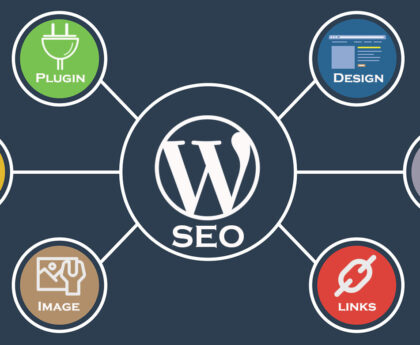In the fast-paced world of online content, creating a blog post that stands out and attracts readers is no easy task. To make your blog post shine in the vast sea of internet articles, it’s essential to optimize it for both search engines and human readers. In this article, we’ll explore several helpful strategies for optimizing any blog post, ensuring it not only ranks well but also engages and retains your audience.
- Keyword Research and Integration: Keywords are the foundation of any well-optimized blog post. Identify relevant keywords or phrases related to your topic using tools like Google Keyword Planner or SEMrush. Incorporate these keywords naturally into your content, including in the title, headings, and throughout the text. However, don’t overdo it. Keyword stuffing can harm your SEO efforts and readability.
- Compelling Titles and Headlines: Your blog post’s title is the first thing readers see, and it plays a significant role in their decision to click through. Craft a compelling, attention-grabbing title that accurately reflects the content of your post. Use power words and ask questions to pique the reader’s curiosity.
- Quality Content: High-quality content is the heart of any successful blog post. Ensure your content is well-researched, informative, and provides value to your audience. Well-structured, organized content is easier to read and keeps readers engaged.
- Engaging Introduction: The introduction is your chance to hook your readers. Start with a compelling story, a surprising fact, or a thought-provoking question to draw readers in. Clearly state what your blog post is about and why it’s worth their time.
- Use Subheadings: Break your content into smaller, digestible sections using subheadings. This makes your post more scannable and helps readers find the information they’re looking for quickly.
- Internal and External Links: Incorporate both internal and external links in your blog post. Internal links connect to other relevant pages on your website, improving the user experience and SEO. External links to reputable sources add credibility and enhance the reader’s understanding of the topic.
- Visual Content: Visuals like images, infographics, and videos can enhance your blog post’s appeal. They break up the text, making the content more visually appealing. Be sure to include alt text for images to improve accessibility and SEO.
- Optimize for Mobile: In an era where many readers access content on their mobile devices, it’s crucial to ensure your blog post is mobile-friendly. Responsive design and well-formatted content will improve the user experience on smaller screens.
- Meta Description: Craft a compelling meta description for your blog post. This short snippet appears in search engine results and serves as an invitation to click on your link. Make it concise, informative, and include your target keyword.
- Optimize Images: Compress and resize images to reduce load times and improve page speed. Slow-loading pages can deter readers and negatively impact SEO rankings.
- Social Sharing Buttons: Make it easy for readers to share your blog post on social media by including social sharing buttons. This can increase your post’s visibility and reach a broader audience.
- Grammar and Proofreading: Nothing can turn off readers faster than grammar and spelling mistakes. Proofread your blog post carefully, or consider using proofreading tools like Grammarly to help you catch errors.
- User Engagement: Encourage comments and engagement from your readers. Respond to comments promptly and engage in discussions related to your blog post. This not only builds a sense of community but also signals to search engines that your content is relevant.
- Call to Action (CTA): End your blog post with a clear and relevant call to action. Whether it’s subscribing to your newsletter, sharing the post, or exploring other related articles, a well-crafted CTA can guide your readers on the next steps.
- Analytics and Monitoring: Use tools like Google Analytics to track the performance of your blog post. Monitor metrics like page views, bounce rate, and conversion rate. This data can help you fine-tune your content strategy and identify areas for improvement.
- Regular Updates: Keep your blog post fresh and up-to-date. Update it when new information becomes available or when there are changes in the industry. This signals to both readers and search engines that your content is current and relevant.
Optimizing a blog post is an ongoing process, and it requires a combination of technical SEO and user-focused strategies. By following these helpful strategies, you can create blog posts that not only rank well in search engines but also captivate and retain your audience. Remember, the key to a successful blog post is to provide valuable, well-structured content that caters to the needs and interests of your target audience. Happy blogging!
Author Section:
Suzzain is a passionate and insightful blogger, known for her captivating writing style and keen eye for detail. With a knack for storytelling, Suzzain takes readers on immersive journeys through her blog. Check out her pieces of information on sites like The Business Mantra, Real Business Wealth



